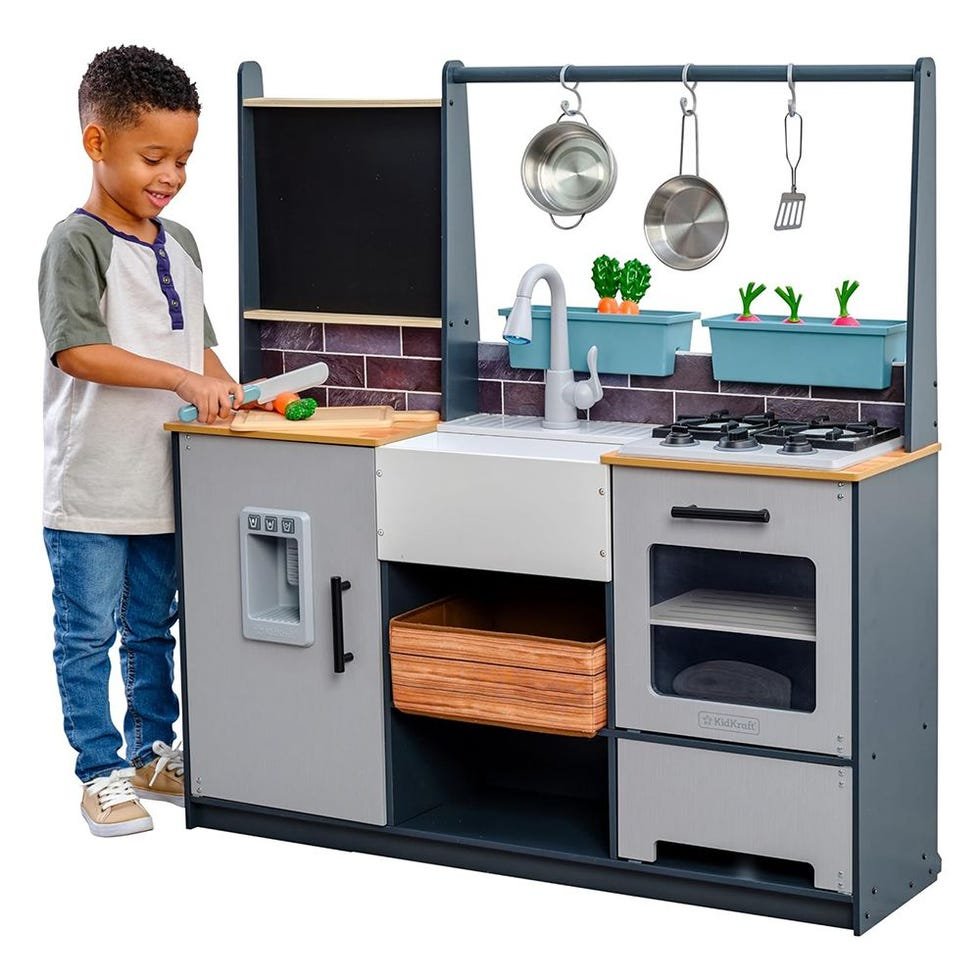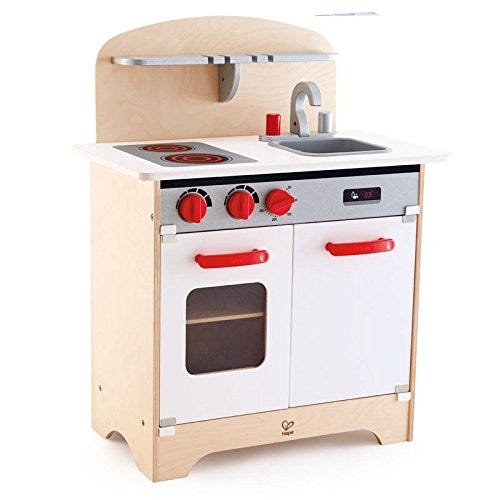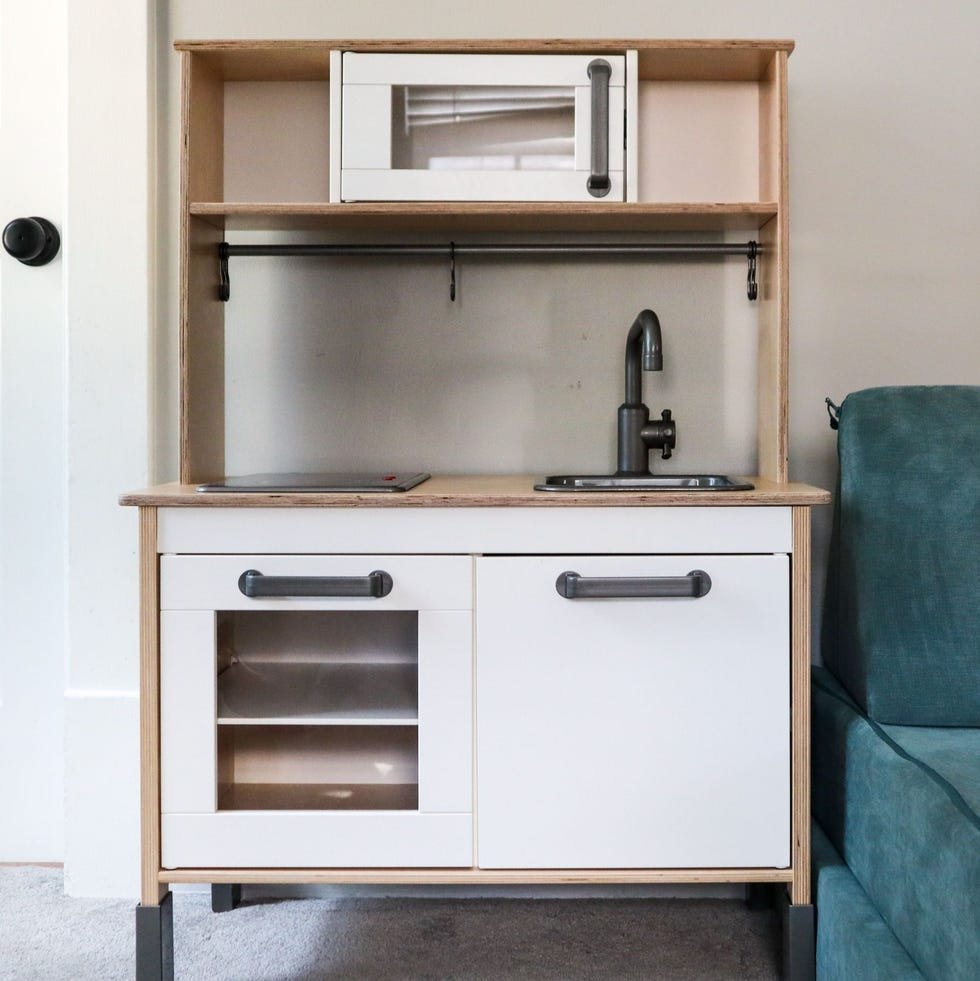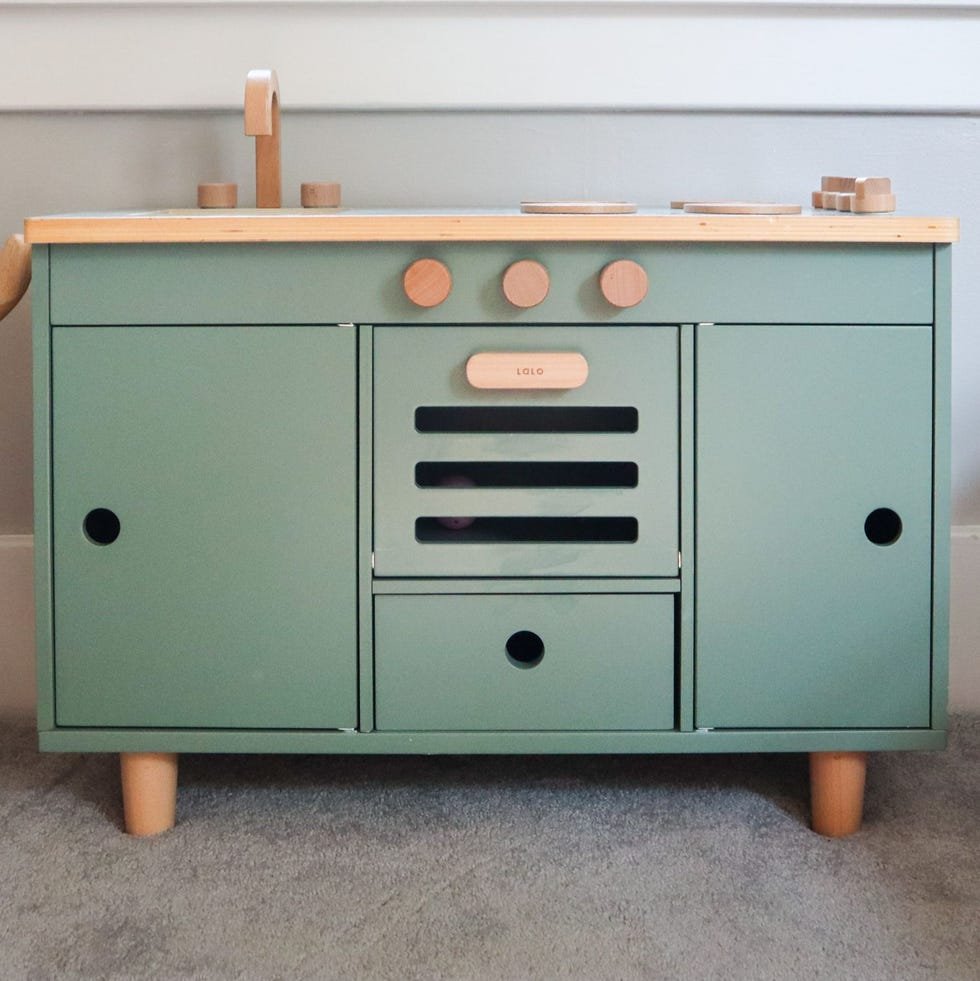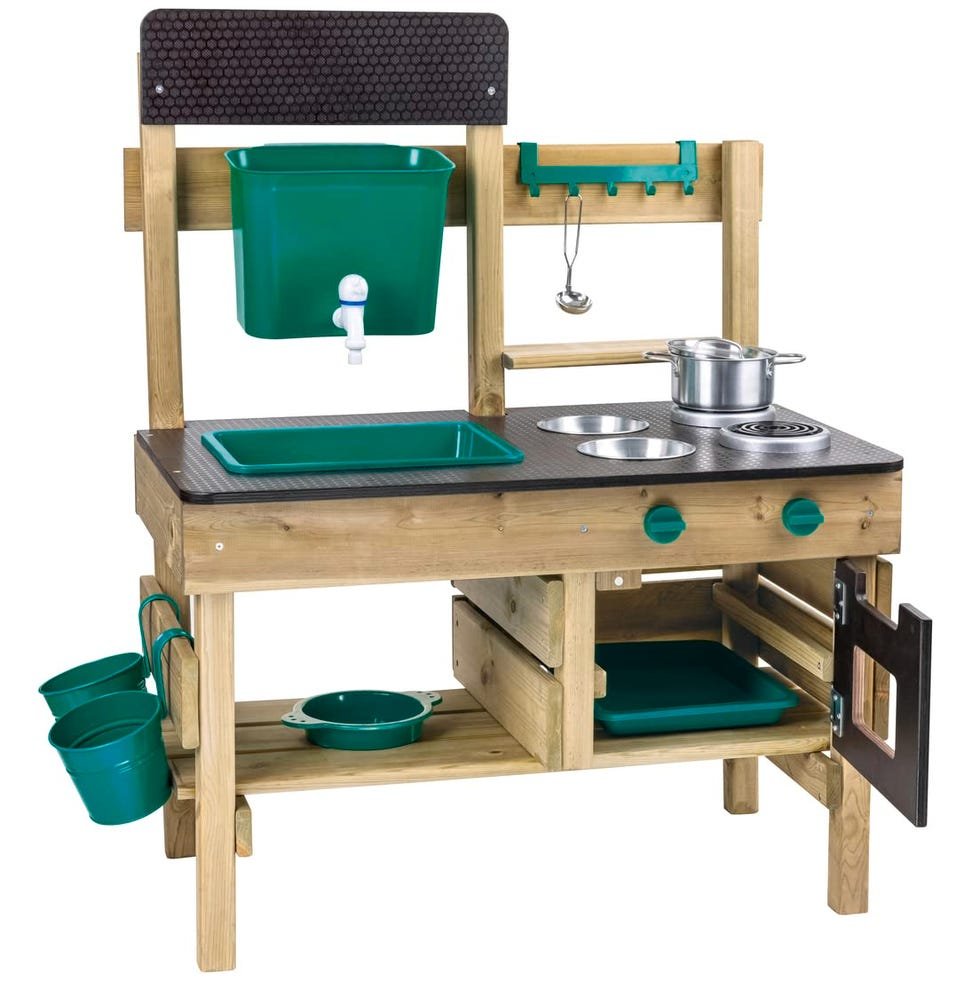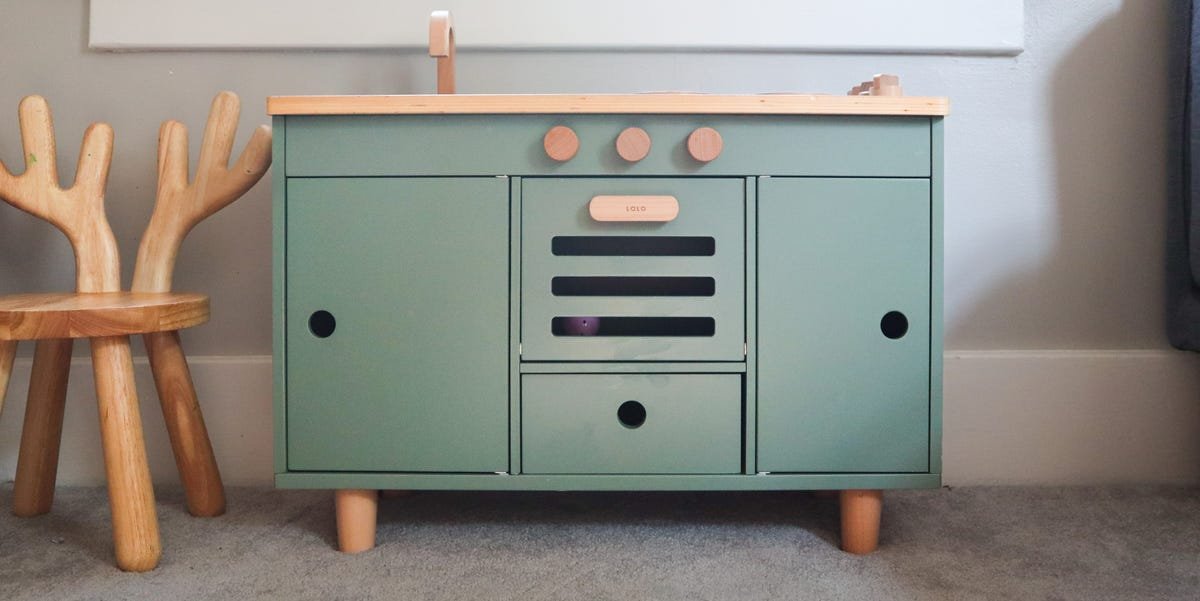
Whoever first thought of miniaturizing the kitchen for kids to play with was a genius. These versatile playsets are all-stars of a kid’s play arsenal, loved by parents and kids alike. The parents for encouraging independent play, and the kids for the worlds it unlocks. Whether you’re buying for your own children or giving as a gift to the new parents in your life, the best kid’s play kitchen is a cornerstone of a playroom. It encourages development, allows young ones to safely practice cooking and baking skills, and opens the door to pretend play.
But not all are created equal, so we polled product experts and early childhood development specialists to shortlist the best-of-the-best, then tested them head to head with our very own children as hardworking imaginary chefs. The five on this list rose to the top as the best-of-the best play kitchens.
Best Kid Play Kitchens
- Best Overall: KidKraft Farm to Table Play Kitchen
- Best Budget:Hape Gourmet Kitchen Set
- Best Multi-level:IKEA DUKTIG Play Kitchen
- Best for Small Spaces:
- Best Outdoor Option:Hape Outdoor Mud Kitchen
What to Consider
When you’re buying a play kitchen for your kids, there are so many to choose from, and a good deal of them are OK. The kitchens on this list are spectacular, but there are still a few key things you want to look out for when you’re buying a play kitchen, and those are the stability, the interactive elements, the overall pretend play potential, and, of course — the accessories. (What is a chef without their tools?)
Stability
Children are rambunctious and unpredictable and like to use things as ladders. Sure, a play kitchen doesn’t look like a climbable structure to you, a fully grown adult. But to a 2-year-old, it’s a jungle gym. Consider the stability of the structure. How well grounded is it, does it have wall anchors, and does it.
Interactive Elements
Parents have different experiences with interactive toys. More Montessori-leaning parenting styles eschew batteries whatsoever. And some contemporary parents embrace screens and music-playing devices. Play kitchens come in both varieties — purely imaginative and fully sensory. On this list, you’ll find a mix of both types of kitchens. We also consulted with early childhood education experts to ensure these picks helped children meet developmental milestones (and with kids to make sure they were fun to play with). But consider your own family’s parenting style as you make your choice.
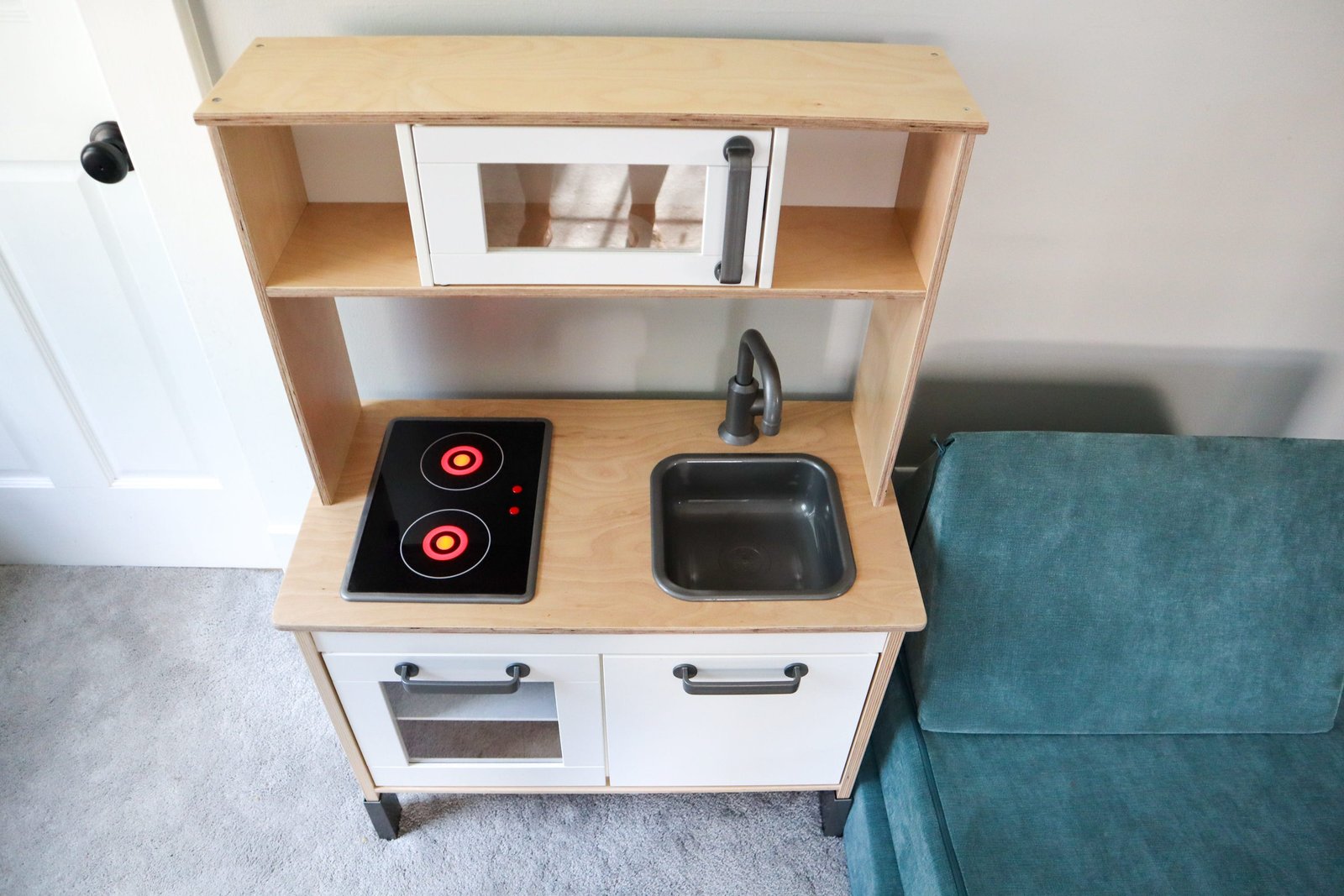
Pretend Play Potential
Emily Schelhaas, an Early Childhood Educator and founder of the TreeSchool outdoor education program with a Master’s degree in Early Childhood Education, says that pretend play potential is a cornerstone of play kitchen consideration.
“Play is how children learn—it helps them solve problems, try new things, and develop the muscles needed for later skills like writing and cutting, as well as the language and vocabulary essential for reading,” says Schelhass. “Pretend play creates a safe space for children to make mistakes, use their imagination, and get creative.”
“When choosing a play kitchen to encourage pretend play, opt for a simple, open-ended design. This approach allows children to use their imagination and creativity in various ways. A neutral kitchen setup can be adapted into a bakery, ice cream shop, coffee shop, restaurant, or home kitchen. While realistic food truck kitchens or pizza shops might seem appealing, they can limit creativity by dictating a specific use for the kitchen, which may lead to a loss of interest.”
Accessories
What good is a kitchen without food to cook? Some kitchens, like our first overall pick from Kidkraft, ship with accessories. Most don’t. Keep this in mind as you shop: The budget pick is cheaper, but you’ll likely want to augment it with play food of store-bought or homemade variety. And keep in mind your children might be more interested in neutral, imagination-oriented accessories. Schelhass found that, with her own three children, “they were much more engaged when they used dried beans, playdough, or other loose parts like wooden beads, paper balls, or pinecones to create their own food” rather than toy food.
Differences Between Outdoor and Indoor Play Kitchens
The pros of traditional play kitchens are numerous and can foster pretend play in an intimate, enclosed setting, with all the benefits we mention above. Outdoor play kitchens are a little different because they’re also engaging the environment and the elements. According to Emily Schelhaas: “An outdoor play kitchen or mud kitchen serves as a versatile educational tool, exposing children to various educational concepts.” These may include but aren’t limited to:
- Science: Children explore how different ingredients (dirt, water, gravel, etc.) mix and interact.
- Math: Measuring spoons and cups introduces concepts of measurement and volume, and counting ingredients helps with numerical skills, children often give their food a price thus introducing money.
- Language Development: Exposure to new textures and ingredients invites children to explore new vocabulary. Role-playing helps them practice storytelling and language skills.
- Social Skills: Working together in the kitchen fosters collaboration and problem-solving as children negotiate roles and create a plan for their play.
- Physical Development: Spending time outside meets sensory needs with diverse sounds, light, and tactile materials. Using kitchen utensils enhances fine motor skills, while activities like digging, stirring, and mixing promote gross motor development.”
How We Tested
When I told my four-year-old I had to try out different play kitchens for work, he said to me, in confusion, “Toys don’t work.” Fair enough, kid. But secretly, this time, they were. We consulted with early education experts, daycare owners, and kid’s product experts to narrow the field to finalists of the best play kitchens. Then, we put the finalists head-to-head with the most discerning audience we could find: toddlers. You know, the ones who sometimes would rather play with a handful of gravel than with a brand-new toy. Taking that into account with the safety and early education perspective, we came up with a list of finalists and tested them head-to-head, looking at their durability, ease of assembly, kid interaction, and even aesthetics. These five emerged as the across our collective categories and criteria.

